What Are The Flowers That Attract Hummingbirds?
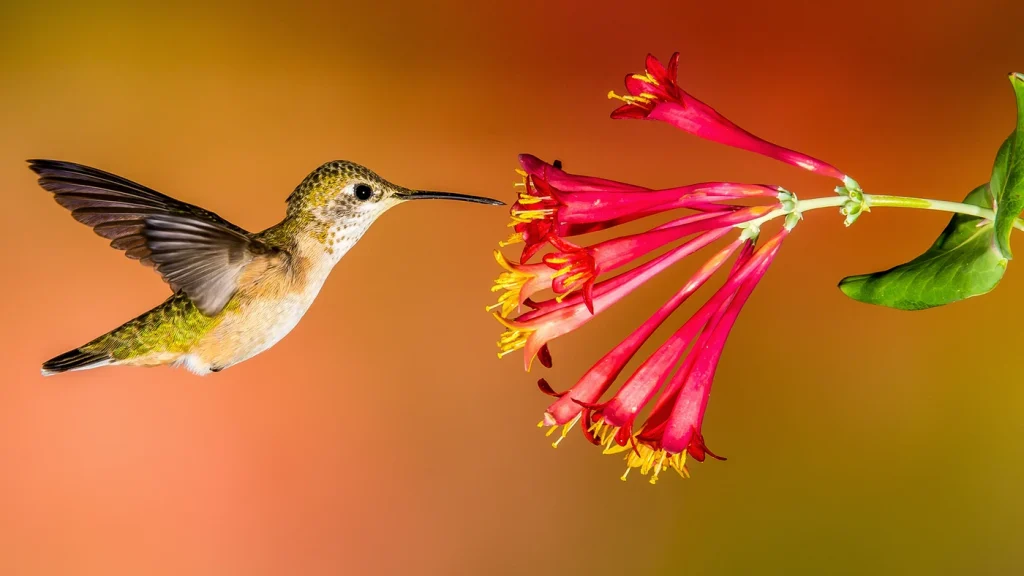
It’s a question that we get asked all the time at the shop. And for good reason!
Few visitors bring as much wonder to a garden as the hummingbird, a feathered marvel that defies gravity and expectations.
Hummingbirds have enormous energy needs, so they spend the majority of their time feeding. They will visit up to 2,000 flowers per day! Did you know that hummingbirds remember every flower that they have visited for their entire life span?
The more nectar a garden provides them with, the more often a hummingbird will visit. Hummingbird lovers everywhere attempt to add something new every year to their garden with the hope of being the most memorable in the neighborhood. Talk about a competition!
Don’t you worry though, I’m here today to walk you through what these tiny flyers are on the hunt for. We’re also going to go over which flowers they prefer so you can have a solid foundation for a nectar-abundant hummingbird garden.
The Basics for Attracting Hummingbirds
Petals that Pop
Unlike bees, hummingbirds rely on sight rather than smell to attract them to flowers. Hummingbirds are especially attracted to the color red, but they also love orange, pink, and purple flowers. It’s not because they can’t see any other colors though. It’s actually because these colors typically signal rich nectar sources.
Nature’s Energy Drink: Nectar
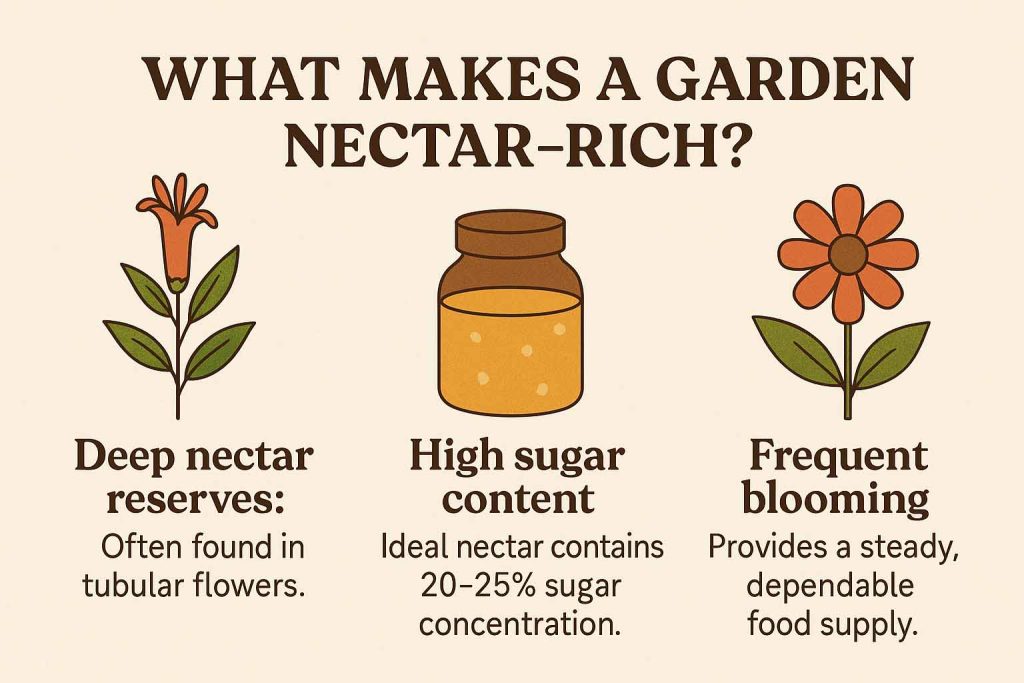
Due to their high energy needs, hummingbirds need a constant and rapid energy source. Nectar provides that to them in the form of simple sugars (mainly sucrose). A hummingbird can surprisingly consume up to twice its body weight in nectar every day! Nectar-rich flowers are more likely to attract hummingbirds as recurrent visitors.
Built for the Beak
Hummingbirds have long, slender beaks that are perfectly designed for tubular-shaped flowers. The tubular shape allows them to insert their beaks fully to reach nectar that other pollinators cannot easily access. Tubular flowers actually produce higher quantities of nectar and store it deep inside to prevent insects from accessing it.
Top Tips for a Garden that Attracts Hummingbirds
Plant in Groups
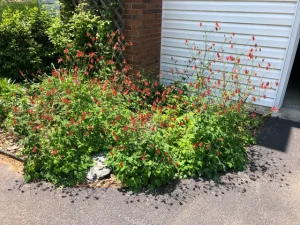
Hummingbird wings beat up to 80 times per second. That blur you see when one zips past? It’s a marvel of nature—hummingbirds are the only birds that can hover in place, fly backward, and even upside down. These marvels of nature move at an average of 25-30 miles per hour!
A key to attracting them is to grab their attention. The best way to do this is to plant clusters of the flowers, 3-4 plants of the same variety/color in each spot. Groupings like these pictured will make them much easier to spot.
TIP: If you need help getting you garden started check out our post on starting a garden!
Provide Continuous Bloom
Hummingbirds burn calories at a rapid pace—so much so that they can starve in hours without food. Hummingbirds need a reliable food source that they know will provide their nutritional needs, day after day.
A garden that blooms from early spring to fall ensures they always have access to nectar when they need it. Make sure to include a variety of plants in your garden including early, mid, and late season bloomers to keep these little guys well fed!
Avoid Pesticides
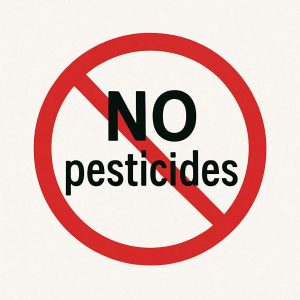
Hummingbirds are tiny, they only weigh a few grams. Even small amounts of chemical exposure can be harmful or fatal to them. They can ingest pesticides from drinking nectar from contaminated flowers.
Their main fuel source is nectar, but hummingbirds also rely on protein from insects to help them survive. They can ingest pesticides from small insects (such as gnats or fruit flies) that have been exposed to them as well.
Also, keep in mind that chemical pesticides reduce the insect population, which also eliminates a key part of a hummingbird’s diet. For a safe and thriving hummingbird haven, opt for organic gardening practices, encourage natural predators, and use manual pest control when needed.
Add a Feeder
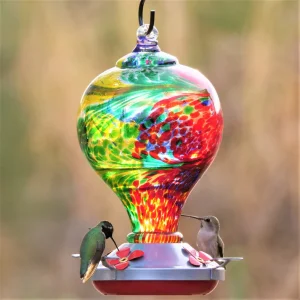
Even the most well-planned garden has gaps in bloom cycles. A hummingbird feeder provides consistent, dependable nutrition—especially when flowers aren’t blooming or during harsh weather. Add a hummingbird feeder or two into your garden to ensure a reliable nectar supply!
Bright red feeders are the best to place in your garden because they are easy for hummingbirds to spot. Once they find it, they often stay in the area, exploring your garden and returning regularly.
Fill feeders with a homemade nectar, simply 4 parts water to 1 part sugar, with no red dye.
Photo Credit: That beautiful handblown glass feeder you see pictured above is from Muse Garden.
The Bloom Menu: What Hummingbirds Are Craving
Now that you have an idea of what hummingbirds are searching for, let’s take the rest of the guessing game out of finding flowers that attract hummingbirds!
These flowers are tried-and-true favorites of our tiny, high-energy visitors. From vibrant annuals to nectar-rich perennials, each one is a hummingbird magnet. Add them to your garden and get ready to hear the hum of happy wings!
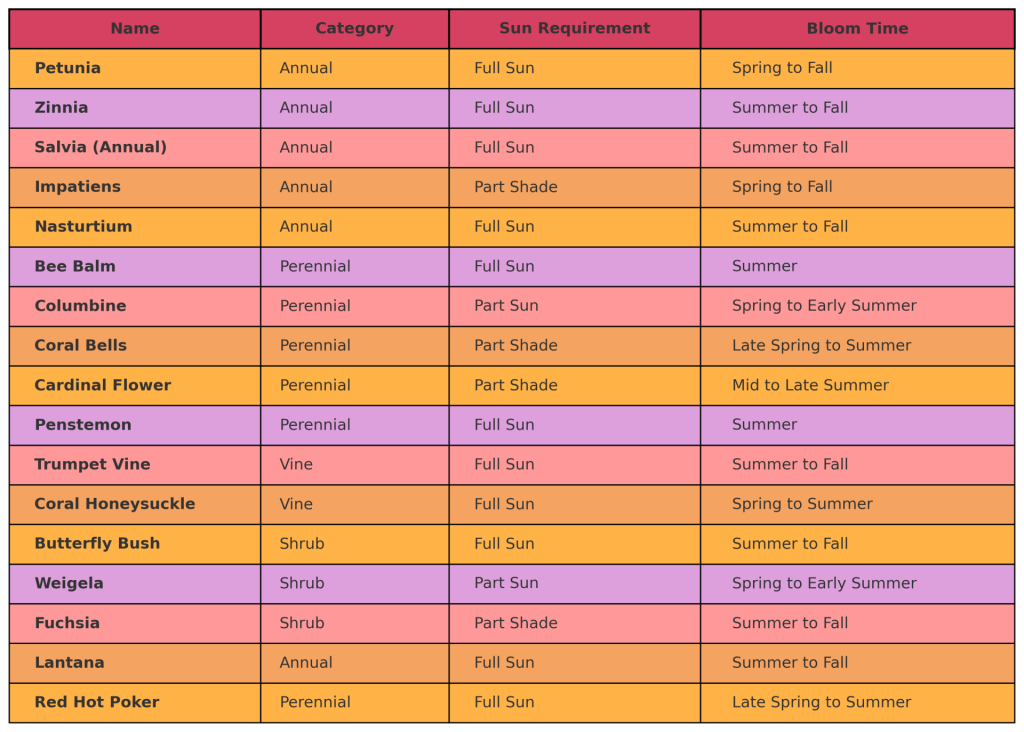


Conclusion: Let the Humming Begin!
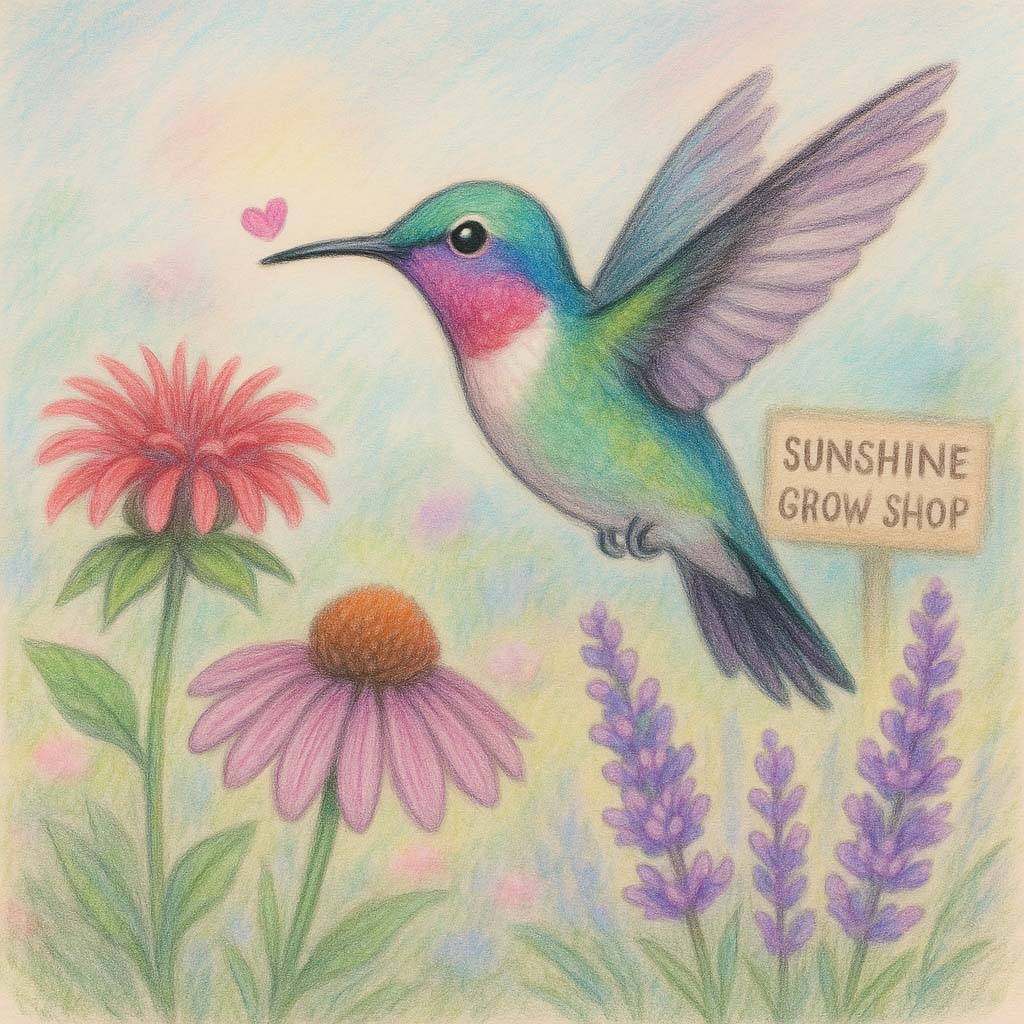
There you have it – A short guide on the flowers that attract hummingbirds and other tips to draw these beautiful birds to your garden.
With the right flowers, a splash of color, and a sprinkle of nectar-rich blooms, your garden becomes more than just a beautiful space—it becomes a haven for hummingbirds. A single hummingbird can pollinate hundreds of plants in a single day. By gardening for hummingbirds, you’re not just creating a sanctuary for these remarkable creatures-you’re also helping entire ecosystems to thrive!
Whether you’re in it for the joy of their flutter or the beauty of their visits, planting for these tiny pollinators brings magic to every bloom. So plant with your heart, and the humming will follow.
As always, HAPPY PLANTING EVERYBODY!!!

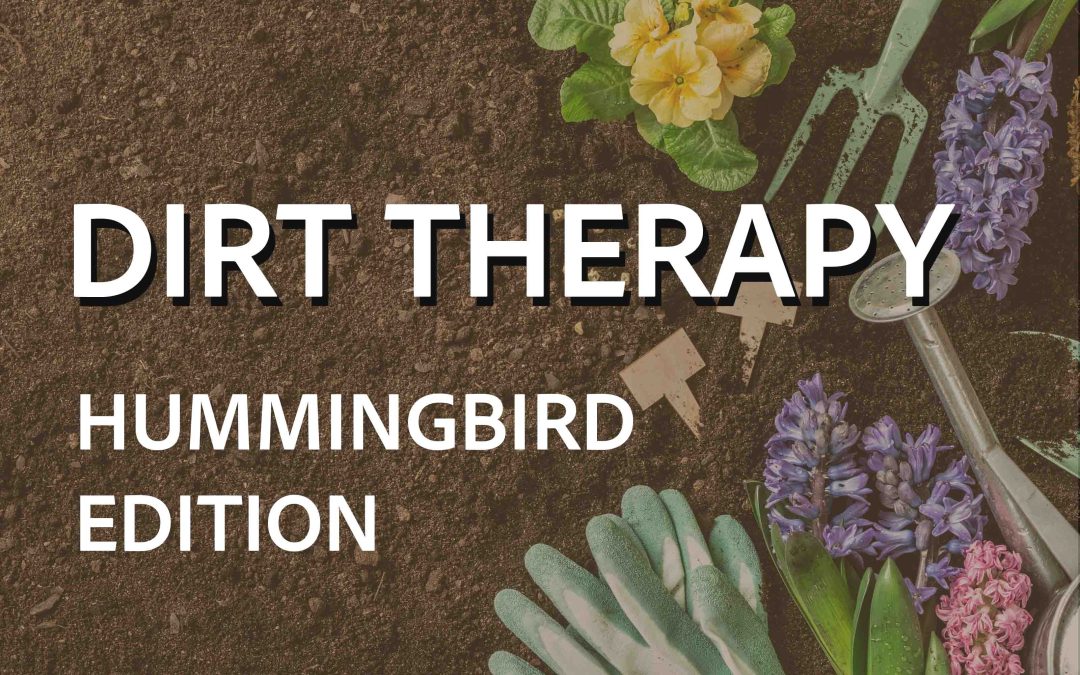
Really enjoyed the article on the hummingbirds! Thanks!